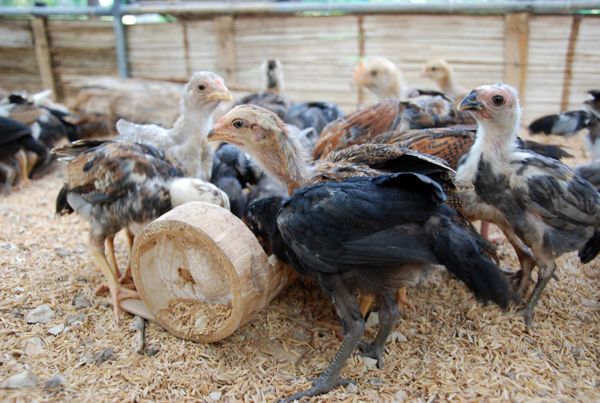Raising native chickens is an income resource generator. Traditionally, raising native chicken is a backyard practice wherein the chickens can roam freely with minimal interventions in terms of feed supplementation, proper housing, health care, breeding, selection, and handling, among others.
To institutionalize a science-based approach to raising native chicken that will lead to a better understanding on its proper management, the Bureau of Agricultural Research (BAR) conducted a lecture-seminar presentation on the “Advances in Commercial Production of Philippine Native Chicken”. This was presented and delivered by Dr. Jaime C. Cabarles Jr., acting dean of the College of Agriculture, Resources and Environmental Sciences of Central Philippine University (CPU), Iloilo City.

Dr. Cabarles mentioned that raising native chickens is a multi-billion peso industry and the active participation of various stakeholders along the production and food value chain is imperative for the development of the industry. Based on his lecture, Dr. Cabarles said that the unstructured market for native chicken and its products is still inadequate and still lack a formal channel or distribution scheme from the raisers to consumers. This is in great contrast to the commercial breeds wherein some commercial-scale operators follow a certain method. He added that the lack of production technologies and marketing protocols greatly affect the availability, price, standards, quality of the chickens and even the packaging of products, and thus must be addressed.
The required inputs including the sources of day old chicks (DOC), supplemental feeds, phytobiotics, package of technologies for commercial production, and advanced line of facilities, among others are limited, and therefore, a systematic approach is vital.
The resource speaker advised and shared some important tips to the participants should they decide to venture into backyard or full scale commercial operations.
Experience in raising native chickens topped his list of prerequisites. The ranging area requires a stocking density of one bird per five sq.m. ranging yard. However, the regular stocking density is 10 sq.m. per bird. This allowed the fowl to practice their natural behavior. Drainage, tree covers, presence of scavengeable feeds, surrounding households, and other flock of chickens must be considered in identifying the ranging area. The modification of the area can be done to fit the requirements of the raisers. In terms of labor, an individual can manage to rear 1,000 – 1,500 heads of chicken. This is to maximize the laborers time in feeding, cleaning, and in doing other activities.
Dr. Cabales also recommended to prepare a detailed feasibility study to avoid unwise spending and the utilization of locally-available resources can likewise help reduce capital requirement.
Studies showed that native chickens that are housed in better facilities could significantly improve their survival rate compared to those without. Proper housing provides protection against any form of draft and for easy monitoring as to the number of chickens in a flock. To some would be raisers, the design and materials required for housing construction may be expensive, and thus recommended the use of such materials like bamboo, wood, nipa shingles, and other alternatives as long as they are treated against termites. ### (Patrick Raymund A. Lesaca)
